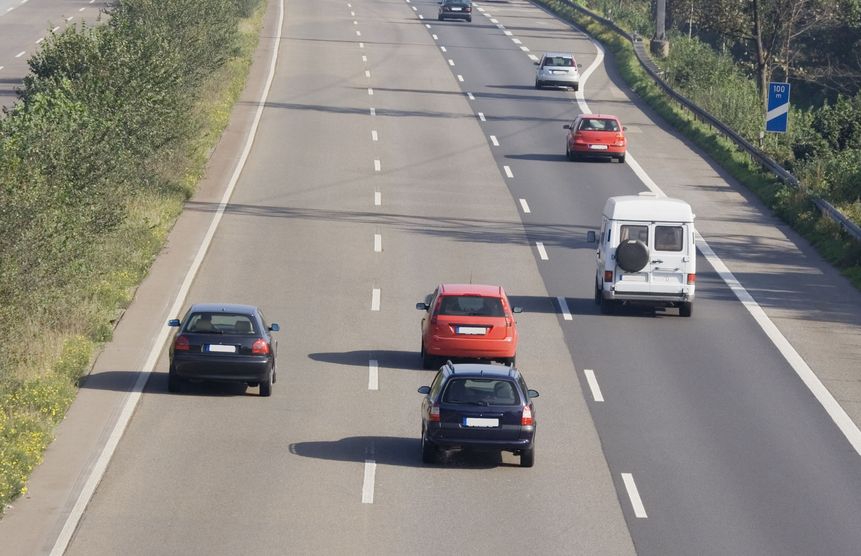Tailgating – The Leading Cause of Rear-End Accidents
July 2, 2018 | Category: Automobile Accidents | ShareFlorida reported over 398,000 automobile accidents in 2017 resulting in 165,000 injuries. Many of these accidents were rear-end accidents when drivers followed too closely behind slower-moving vehicles. When this happens, drivers are taking serious risks of causing accidents which can involve severe injuries.
 Each year, rear-end collisions account for nearly 23 percent of all roadway fatalities. Tailgating is generally the cause of such accidents, and tailgating is also one of the most common symptoms of aggressive driving, says the NHTSA (National Highway Traffic Safety Administration).
Each year, rear-end collisions account for nearly 23 percent of all roadway fatalities. Tailgating is generally the cause of such accidents, and tailgating is also one of the most common symptoms of aggressive driving, says the NHTSA (National Highway Traffic Safety Administration).
Fort Myers Car Accident Attorney, Randall Spivey said, “This is definitely not an unusual happening. On May 30, 2018 an associate saw three separate rear-end collisions in less than a mile in the Immokalee Road – Route 41 area, of Naples.”
NHTSA defines tailgating as the operation of a motor vehicle in a manner that endangers, or is likely to endanger, persons or property. When the forward vehicle has to stop suddenly, the vehicle in the rear does not have enough time to brake without crashing into the back of the forward vehicle.
The effects of tailgating
The Texas Department of Insurance issued a Driving and Tailgating Fact Sheet which says, “When drivers tailgate, they significantly reduce their stopping distance, or the distance needed to come to a complete and safe stop. Other critical driving elements drivers sacrifice when tailgating are perception and reaction times. Perception and reaction times are two separate intervals of time. Perception is the time we need to see and process the roadway hazard, while reaction time is the time needed for a driver’s body to physically react to the brain’s perception. When a driver tailgates, both are significantly reduced. The more space a driver allows between his/her vehicle and the vehicle in front, the more time there is to see a hazard and react safely.”
How do you know what a safe distance is?
The National Safety Council (NSC) recommends, “Increasing the distance between you and the car ahead can help give you the time you need to recognize a hazard and respond safely; follow the 3-second rule. NSC says determining the 3-second gap is relatively easy. When following a vehicle, pick an overhead road sign, a tree or other roadside marker. Note when the vehicle ahead passes that marker, then see how many seconds it takes (count 1-1,000; 2-1,000; 3-1,000) for you to pass the same spot. If it is not at least three seconds, leave more space and increase your following distance. Think of following distance in terms of time, not space. With a standard of 2.5 seconds, highway engineers use time, rather than distance, to represent how long it takes a driver to perceive and react to hazards. The NSC also uses this standard (plus a little extra for safety) when recommending the 3-second rule for following distance.”
Common injuries from rear-end crashes
There are some common injuries that can occur in rear-end crashes. These injuries depend on how fast the vehicles are traveling and the size of the vehicles. Some examples of the injuries are:
- Broken bones
- Lacerations
- Traumatic brain injury
- Spinal cord injury
- Burns
- Cuts from broken glass
Following too closely is against the law
Florida law statue 316.0895 states that the driver of a motor vehicle shall not follow another vehicle more closely than is reasonable and prudent, having due regard for the speed of such vehicles and the traffic upon, and the condition of, the highway. Following too closely is punishable as a moving violation.
Who is at fault in a rear-end crash?
Rear-end collisions are most often considered to be the fault of the driver of the vehicle in the rear who was following too closely behind the vehicle in front. However, if the lead driver erratically switches lanes and cuts off the driver who is behind, and slams on the brakes, the lead driver could potentially be held liable for the collision.
“If you have been injured in a rear-end collision, contact the experienced legal team at Spivey Law Firm, Personal Injury Attorneys, P.A.,” said Fort Myers Car Accident Attorney, Randall Spivey.
Fort Myers Car Accident Attorney, Randall L. Spivey is a Board Certified Trial Attorney – the highest recognition for competence bestowed by the Florida Bar and a distinction earned by just one (1%) percent of Florida attorneys. He has handled over 2,000 personal injury and wrongful death cases throughout Florida. For a free and confidential consultation to discuss your legal rights, contact the Spivey Law Firm, Personal Injury Attorneys, P.A., in Lee County at 239.337.7483 or toll free at 1.888.477.4839,or by email to Randall@SpiveyLaw.com. Visit SpiveyLaw.com for more information. You can contact Spivey Law Firm, Personal Injury Attorneys, P.A.in Charlotte County at 941.764.7748 and in Collier County 239.793.7748.

